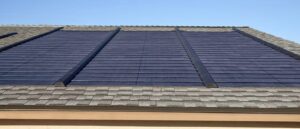Presented today are the last two components of successful daylighting:
- Integrate the daylighting scheme into the architecture
- Integrate the daylighting scheme with building systems
These final two points remind us that architecture is synergistic, that is it becomes more than the sum of its parts. They tie the entire daylighting strategy together and their implementation can make or break a design.
Integrate the daylighting scheme into the architecture
Daylighting provides an excellent opportunity to give intentional and unique form to a building. The north, south east and west façades of the building are all in need of different daylighting strategies. This makes it easy to create a solution that is eclectic. At the same time it gives the opportunity to create a dynamic façade that is consistent in fundamentals yet different in the details.
Integrate the daylighting scheme with building systems
Last time we touched on daylight controls. Integrating daylighting systems with building systems goes beyond simple controls. It also has to do with the difference in the color temperature of daylight versus that of electric light. To improve the cohesiveness of the lighting design it is important to specify lighting that is compatible with natural light.
Since reducing electricity use is one of the reasons for incorporating daylighting into a building it is important to have simple controls that dim or switch off the electric light when it isn’t needed. Simple controls are easy to repair or replace and contribute to the success of a daylighting strategy.
Lastly the combination of daylight and supplemental electric light provide an opportunity to reinforce a particular lighting strategy or to play off of it. Realizing the passage of time is a side effect of using natural lighting solutions. This passage of time creates an opportunity to differ the electric lighting strategy in the morning, evening and night to help reinforce the passage of time, something that many occupants are missing in modern buildings.









